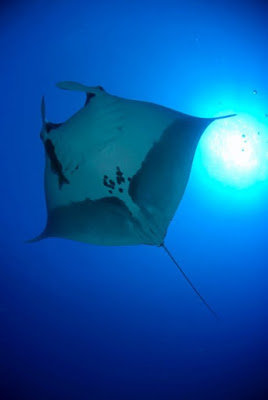
 written by Charles Bird
written by Charles Bird
Thailand Divers Fish and Marine Creatures Guide From Phuket Thailand..
What this will be is a quick guide to some of the amazing fish we see when diving in the waters off Phuket Thailand. Different fish will be featured everyday and as the Similan islands season is about to start too these fish will be for sure seen in these waters too. The scuba diving around Thailand Phuket is some of the best you will find anywhere. From the shallow bays of the Racha Islands that are perfect for people who want to discover scuba diving Phuket is ideal. Then again the sloping reefs are ideal location for people who want to learn to scuba dive Phuket has dive sites for all levels of diver. Then as many experienced divers will know that just to the north west of Phuket lies the Similan islands and these are normally done on a liveaboard trip for 2-4 days. This is by far the best diving Phuket has and the nicest way to get the most out of the diving as it gets you (on the 3 or 4 day trip) to have a day diving Richelieu rock which is situated just north on the Similans and is part of the Surin islands national park. Phuket liveaboards to the Similan island and other destinations are available from all good Phuket dive center.
There are some creatures that exist both on land and in the ocean which are iconic. Lions or Elephants in Africa, Panda's in China, Polar bears in the Arctic and penguins in the Antarctic. Then the Manta ray is one of those creatures that are iconic when it comes to scuba diving Thailand or any tropical waters. Here in the warm tropical waters off Thailand we are blessed with the Similan island national park. The Similan islands themselves are stunning reef diving but the national park also includes two islands just to the north which are very popular with the reef and giant oceanic Manta Ray. This is one of the things that makes the Similan islands diving very very popular indeed. There really are so many places to dive that the best way to make the most of the amazing diving is by joining a Similan liveaboard. There are many Phuket dive shop 's that offer a range of Similan island liveaaboards. These can range from an overnight trip to a massive two weeks long dive cruise. The longer cruises will take you further north to the Surin islands and the world famous Richelieu Rock which was in Jaques Cousteau's top ten dive sites of all time. These longer cruises can be three days or more to get you to the great Manta Ray locations that make the Similan diving as good as it is.
The manta ray, or cheap manta (Manta birostris), is the largest of the rays, with the largest known specimen having been about 7.6 m (about 25 ft) across. However when you see your first Manta Ray you will swear it was 50 feet or more. When on a Phuket liveaboard of three days or more then you will be sure to get very good chance to see either a reef Manta but also the Giant Oceanic Manta which no matter how many you see always leaves you speechless.
The manta ray, or cheap manta (Manta birostris), is the largest of the rays, with the largest known specimen having been about 7.6 m (about 25 ft) across, with a weight of about 2,300 kg (about 5,000 lb). It ranges throughout all tropical waters of the world, typically around coral reefs. Mantas have been given a variety of common names, including Atlantic manta, Pacific manta, devilfish, and just manta. Some people just call all members of the family stingrays, though stingrays comprise a separate family of rays (Dasyatidae). Mantas are most commonly black dorsally and white ventrally, but some are blue on their backs. A manta's eyes are located at the base of the cephalic lobes on each side of the head, and unlike other rays the mouth is found at the anterior edge of its head. To respire, like other rays, the manta has five pairs of gills on the underside. To swim better through the ocean, they have a diamond shaped body plan, using their pectoral fins as graceful "wings". Distinctive "horns" (from which the common name Devil ray stems) are on either side of its broad head. These unique structures are actually derived from the pectoral fins. During embryonic development, part of the pectoral fin breaks away and moves forward, surrounding the mouth. This gives the manta ray the distinction of being the only jawed vertebrate to have novel limbs (the so-called six-footed tortoise, Manouria emys, does not actually have six legs–only enlarged tuberculate scales on their thighs that look superficially like an extra pair of hind limbs). These flexible horns are used to direct plankton, small fish and water into the manta's very broad and wide mouth. The manta can curl them to reduce drag while swimming. If you are in the area of Thailand or Phuket then a day spent in Phuket diving will now be wasted.
Evolution and taxonomy
Manta rays are believed by some to have evolved from bottom-feeding ancestry, but have adapted to become filter feeders in the open ocean. This allowed them to grow to a larger size than any other species of ray. Because of their pelagic lifestyle as plankton feeders, some of the ancestral characteristics have degenerated. For example, all that is left of their oral teeth is a small band of vestigial teeth on the lower jaw, almost hidden by the skin. Their dermal denticles are also greatly reduced in number and size, but are still present, and they have a much thicker body mucus coating than other rays. Their spiracles have become small and non-functional, as all water is taken in through their mouth instead. Mantas are filter feeders: they feed on plankton, fish larvae and the like, passively filtered from the water passing through their gills as they swim. The small prey organisms are caught on flat horizontal plates of russet-coloured spongy tissue, that span the spaces between the manta's gill bars. Mantas frequent reef-side cleaning stations where small fish such as wrasses and angelfish swim inside the manta's gills and all over its skin to feed, in the process cleaning it of parasites and removing bits of dead skin. The predators of the Manta ray include mainly large sharks, however in some circumstances orcas have also been observed preying on them. Mantas are extremely curious around humans, and are fond of swimming with scuba divers. Although they may approach humans, if touched, their mucus membrane is removed, causing lesions and infections on their skin. They will often surface to investigate boats (without engines running). They have the largest brain-to-body ratio of the sharks and rays. Mantas are known to breach the water into the air. If you are lucky enough to be a witness to this you will be sure to be the envy of all scuba divers around the world as this is a truly amazing and rare sight. However to even give yourself half a chance you need to be in the right place and when Thailand in diving then at least being in the water in a location that Manta rays are known to be will increase your chances of seeing such a marvel.
Its not only on a Phuket liveaboard that you get to see these awesome creatures. From Phuket in the last few years the Manta population has exploded and can be seen on the Phuket scuba diving day trips too. Diving in Phuket is very easy to find as there are many small dive shops and agents offering diving. However its far better to go to a fully fledged dive center like Thailand Divers who will be able to give you the best advice and best standards of teaching. Even when you learn to dive in Phuket you are in with a chance to see such great sights as the Manta ray.
Tags:
-
-
-
-
-
Thailand DiversPhuket Thailandphuket scuba divingphuket liveaboard.








Load more comments